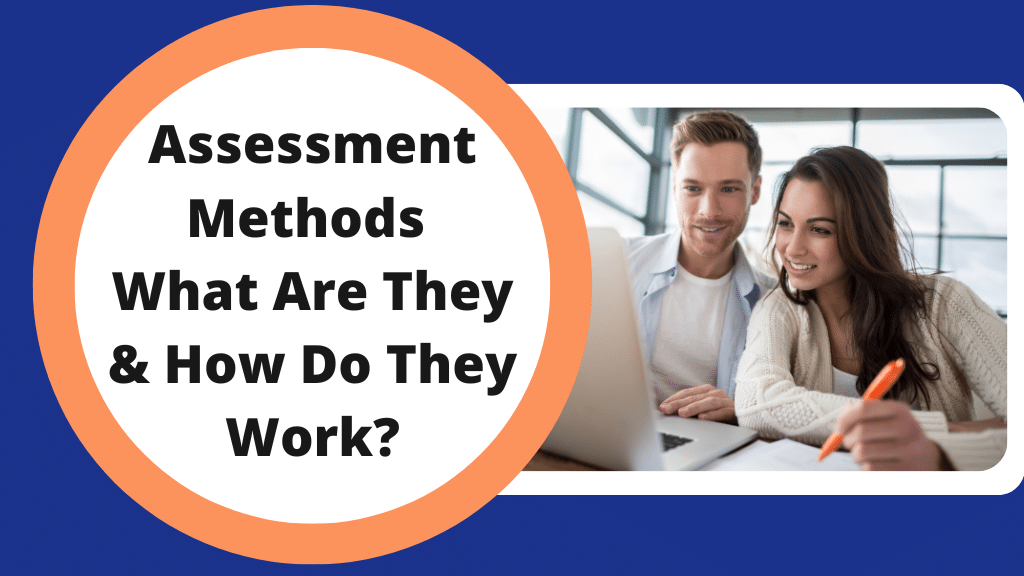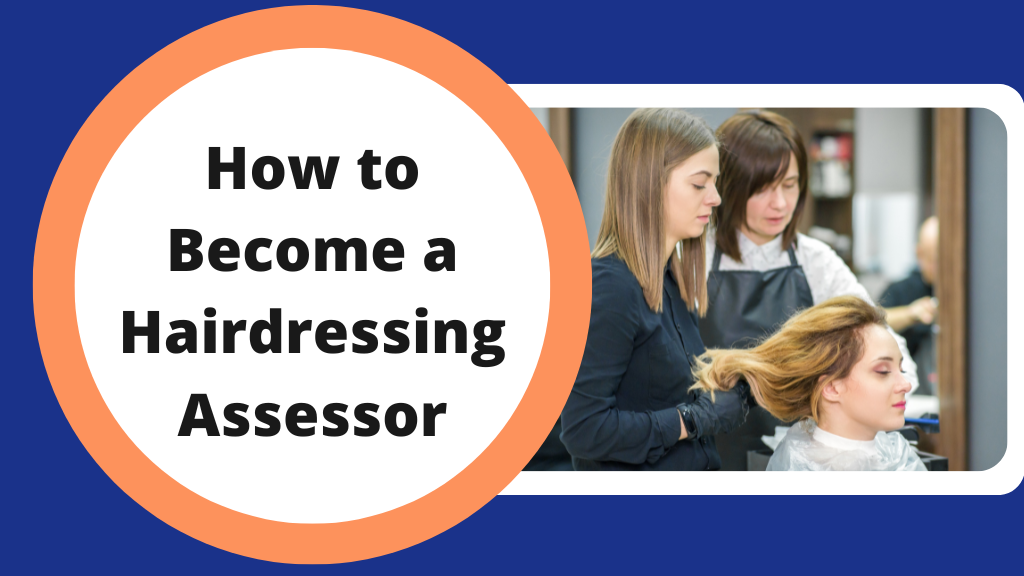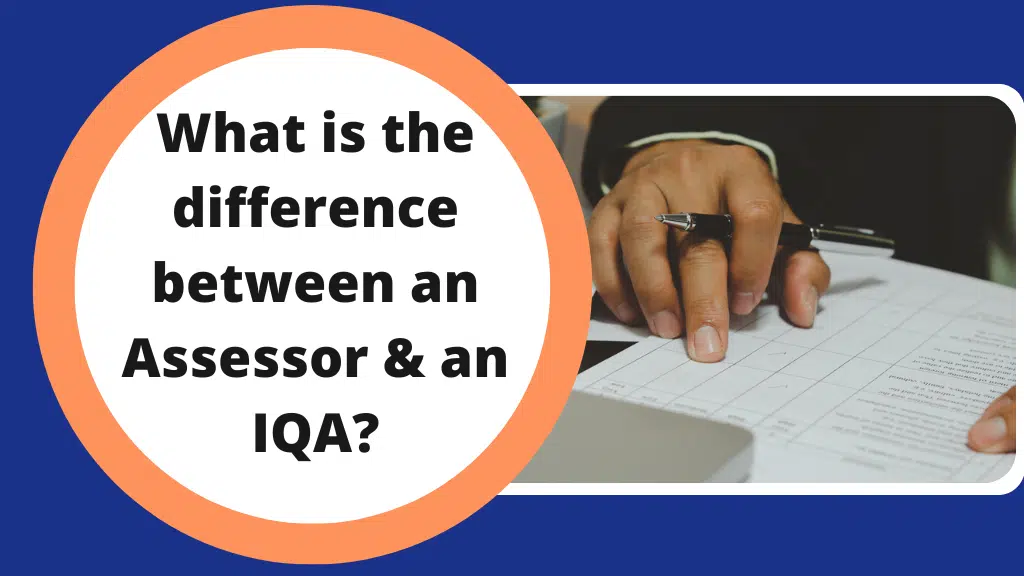July 23, 2025
Assessment Methods: What Are They & How Do They Work?

Assessments in education and training are really events where candidates are checked to see if they have met the requirements of the qualification they are trying to gain. We’re all familiar from our school days of sitting exams, puzzling over questions in the silence of a large school hall – often on a hot and stuffy day. The mere memory of it is enough to induce a shudder in many of us! Exams are one method of assessment, and although they are the one the majority of people are familiar with, they aren’t the only one.
In fact, today’s qualifications across the UK feature a broad and varied range of assessment methods, from practical demonstrations and professional discussions to assignments and portfolio evidence. This shift reflects a more modern and inclusive approach to checking knowledge, skills, and behaviours, one that suits learners across diverse backgrounds and learning styles.
For those working in further education, adult learning, or workplace training, understanding the different methods of assessment in education and training is essential. Choosing the right method can make all the difference in capturing what a learner truly knows and can do.
Why Picking the Right Assessment Method is Important
The assessment method is the way an assessor checks whether a learner has met the standard, for example, through observation, questioning, or reviewing their work. This is distinct from the type of assessment, which refers to when and why the assessment is carried out.
Traditional exams can still be effective for testing theoretical knowledge, especially in subjects where accuracy, terminology or factual recall is important. However, exams often don’t suit learners with additional needs, those with practical strengths, or those who struggle with written communication. Exams also don’t allow you to see how a learner applies their knowledge in real-life situations, which is often the goal in vocational education.
That’s why having different assessment methods suits the modern world, by meeting candidates’ needs and giving fair and reliable results. After all, it is the knowledge, skills and ability that we usually expect to be checked, not the candidates’ spelling, grammar or their party trick of regurgitating information in the exam room and then forgetting it!
Assessment Method vs Assessment Type
In education and training, it’s important to distinguish between two closely related but different concepts: assessment method and assessment type, especially when exploring the role of formative vs summative assessment.
Assessment method refers to how the assessment takes place. This might include observation, written assignments, oral questioning, or a professional discussion. These are the tools or approaches an assessor uses to gather evidence of learning.
Assessment type refers to when and why the assessment happens. The two most common types are:
- Formative assessment: Ongoing assessment designed to monitor progress and guide learning. Examples include informal questioning, quizzes, or reviewing draft work.
- Summative assessment: Final assessment carried out at the end of a unit or course to make a formal judgement on whether learning outcomes have been achieved. This might include a final observation, a marked assignment or a practical test.
Both are essential in education and training. You might use formative assessment to check progress throughout a course, then summative assessment to confirm competence at the end. Importantly, any method of assessment for teachers must be matched to both the type of assessment and the learning outcomes being assessed.
The Most Common Assessment Activities
Some of the popular assessment methods, which aren’t exams, include:
Observation in the Workplace
Observation is one of the most widely used methods of assessment for teachers in vocational education and training. It involves the assessor watching the learner carry out tasks in their normal work environment or a realistic simulated setting.
This is great for assessing practical skills and is a way to check people without interrupting what they are doing. It’s particularly good for checking things that the learner is going to be doing anyway, but which form part of the qualification they are working towards. It particularly suits learners who are ‘doers’ rather than writers, as they can show what they are capable of. Observation is also good for internal assessments at a company where they are expecting employees to carry out their tasks to the standards the organisation has set.
One drawback of observation as an assessment method is that it can’t always be repeated easily, so it may be impossible to recreate the task if something is missed or goes wrong. It also has a limited scope, as only the activities that happen during the observation can be assessed, which means less frequent or knowledge-based elements may be overlooked.
Oral/Verbal Questioning
Oral or verbal questioning is a flexible and accessible assessment where the assessor has a set of pre-written questions that they ask the learner, which are mapped to specific learning outcomes or assessment criteria. These are asked in a one-to-one setting, and the learner responds verbally. This helps the assessor explore how well the learner understands the subject, clarify any gaps, and check for depth of knowledge.
This is a great substitute for the more traditional exam, with the added advantage that the learner doesn’t need to have writing skills or wait months for results. Another strength is its flexibility as assessors can adapt questions, ask for clarification, or explore a learner’s answers in more detail. This makes it especially effective for checking understanding in a conversational and time-efficient way.
However, there are limitations. Oral questioning requires careful planning to ensure that questions are mapped to specific criteria and delivered fairly across learners. Without a written record, it can be difficult to evidence the learner’s response or to maintain consistency between assessors. There’s also the risk of unconscious bias or misinterpretation if assessors are not well-trained.
Skills Test
In a skills test, the assessor sets up a scenario where the learner must perform a task, either using real equipment or a simulation. The performance is then judged against set criteria. This is a great method for checking those practical skills that could well be vital, but for which opportunities to see them are rare.
Good examples of these are rescue or emergency skills, which can’t easily be shown in regular workplaces. Need to check that learners on a first aid course can carry out CPR? Well, you can’t just wait until somebody drops down with cardiac arrest, so a skills test using one of the CPR Anne manikins. Need to check that learners can implement the fire procedure at work? Don’t wait for a fire to start; just get your learners to go through the fire drill to check that they do it correctly.
However, skills tests can make learners feel nervous and require time, planning, and equipment to set up properly. While they offer a reliable way to assess performance, they don’t capture theoretical understanding or decision-making, which may need to be checked through other methods.
Assignments
Assignments are usually in written form and often involve the learner in carrying out some work outside the classroom or workplace. Sometimes, assignments are called coursework or homework. The assessor will set a task or series of tasks for the learner to complete for a deadline, like writing a report, analysing a case study, or researching a topic. Of course, it’s important for the assessor to make sure that they set assignments that will enable the learners to show they have met the requirements.
Once the assignment is complete and handed in (or submitted online), the assessor can check these to see if the learner has met the requirements.
Assignments are often used alongside other assessment methods to give a rounded view of a learner’s competence. They are particularly well-suited to courses where analytical thinking, communication, or subject understanding are central. However, they do require strong literacy skills and self-discipline, which can disadvantage some learners. There’s also the risk of authenticity concerns, as it’s not always possible to confirm who completed the work. Despite this, assignments remain a central part of many courses and are ideal for qualifications with knowledge-based learning outcomes.
Other Methods of Assessment
In addition to observations, oral questioning, skills tests, and assignments, there are many other assessment methods available. These offer greater flexibility and are particularly useful for assessing learners in different settings or with different needs.
- Witness Testimony: A written statement from a qualified or credible person (e.g. a supervisor or manager) who has observed the learner carrying out a task to the required standard.
- Professional Discussion: A structured, recorded conversation between the assessor and learner to explore understanding and link practical experience to theoretical knowledge.
- Case Studies: The learner analyses a real-life or fictional scenario, applying their knowledge to solve problems or suggest improvements.
- Recognition of Prior Learning (RPL): This allows learners to use previous qualifications, experience, or existing evidence to demonstrate competence which reduces duplication and assessment burden.
- Products of Work: Reviewing actual documents, materials or items the learner has produced in their job role, for example, reports, care plans, lesson plans, or risk assessments.
Boost Your Assessing Career with Carlton Training
Whether you’re new to assessing or looking to strengthen your current practice, understanding a broad range of assessment methods is essential for success in today’s education and training sector. At Carlton Training, we provide nationally recognised assessor qualifications that help you develop the skills and confidence to plan, deliver, and adapt your assessment approach to suit every learner.
Our courses, such as the Level 3 Certificate in Assessing Vocational Achievement (CAVA), include hands-on experience and real-world scenarios that prepare you to use a variety of assessment methods in education and training, from observation and skills tests to assignments and professional discussions. You’ll learn how to match the assessment method to the learner, the environment, and the qualification requirements.
Whether you’re working in adult education, apprenticeships, workplace training, or further education, our assessor training will equip you with the tools to carry out effective, fair, and reliable assessments.
Book your assessor course today, or contact our friendly team to find out which qualification is best for your goals. Let Carlton Training support your next step into a rewarding role in assessment and quality assurance.
Next ›‹ Previous
Back to Blog








